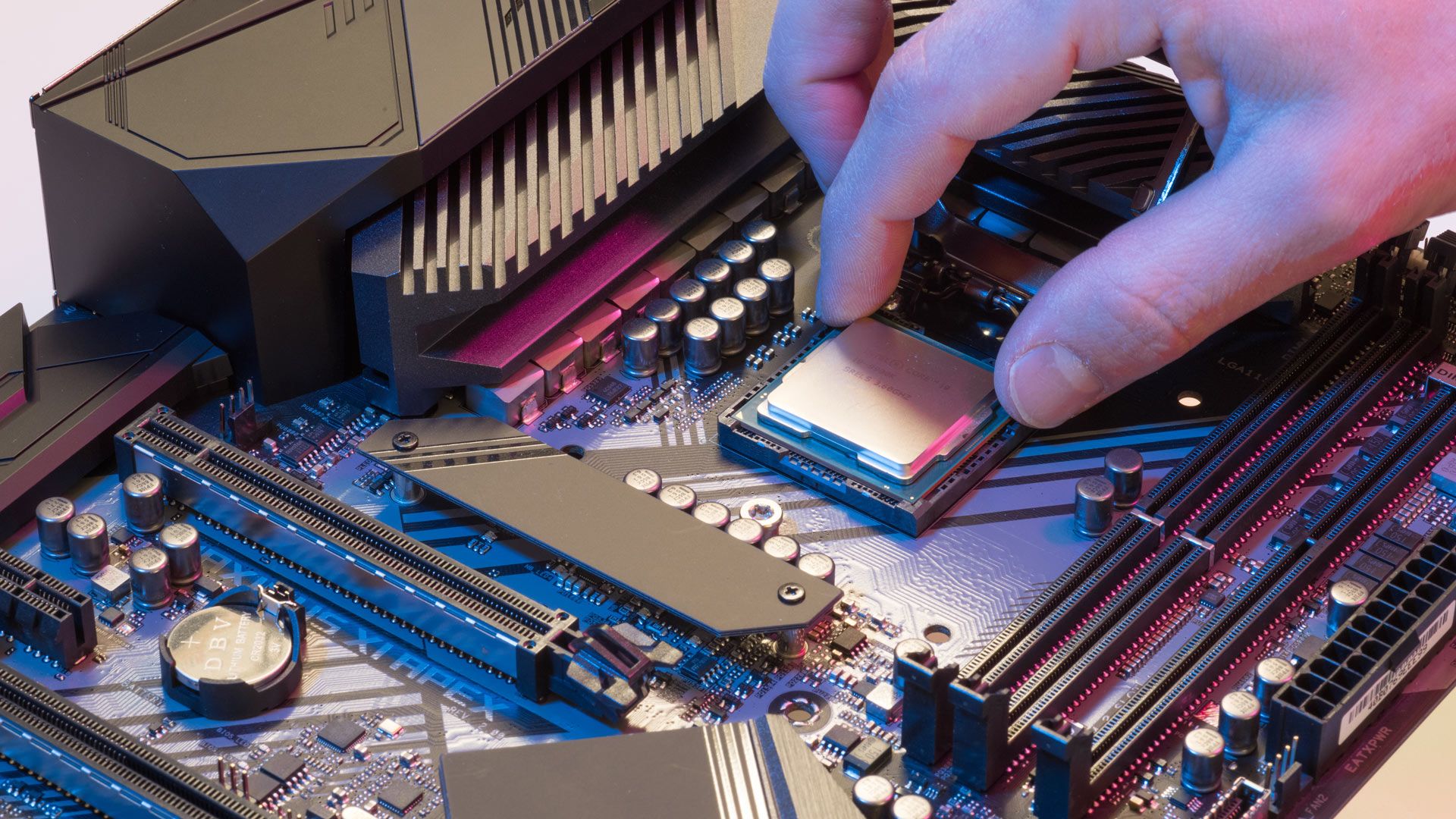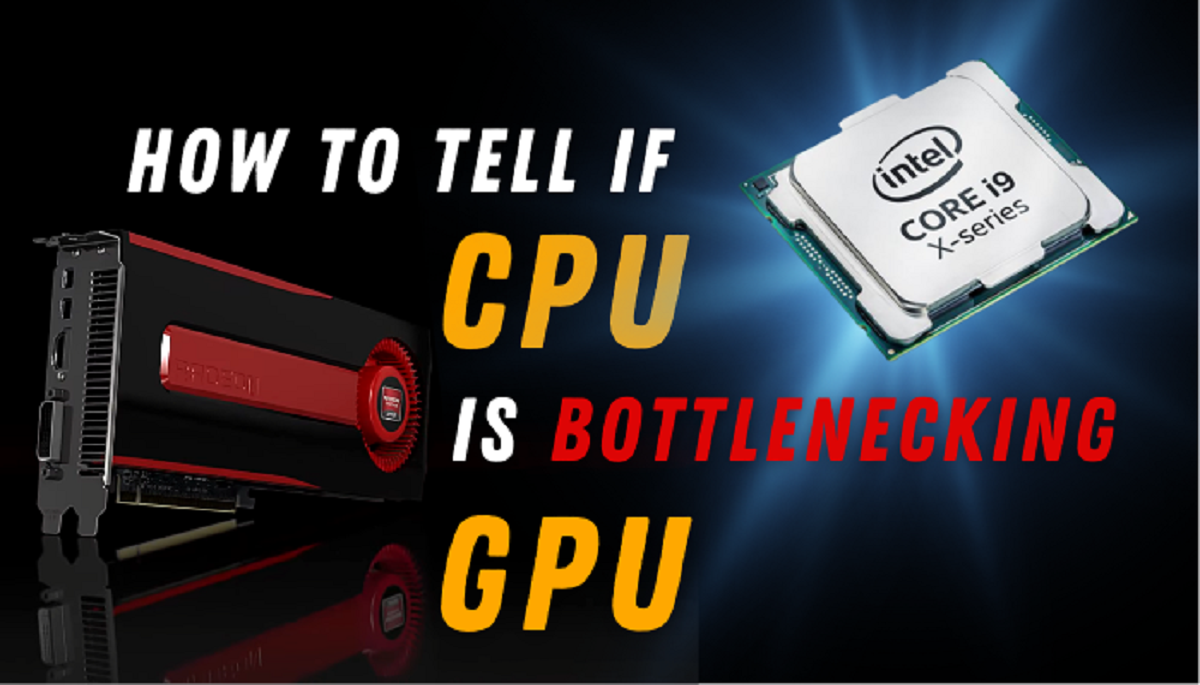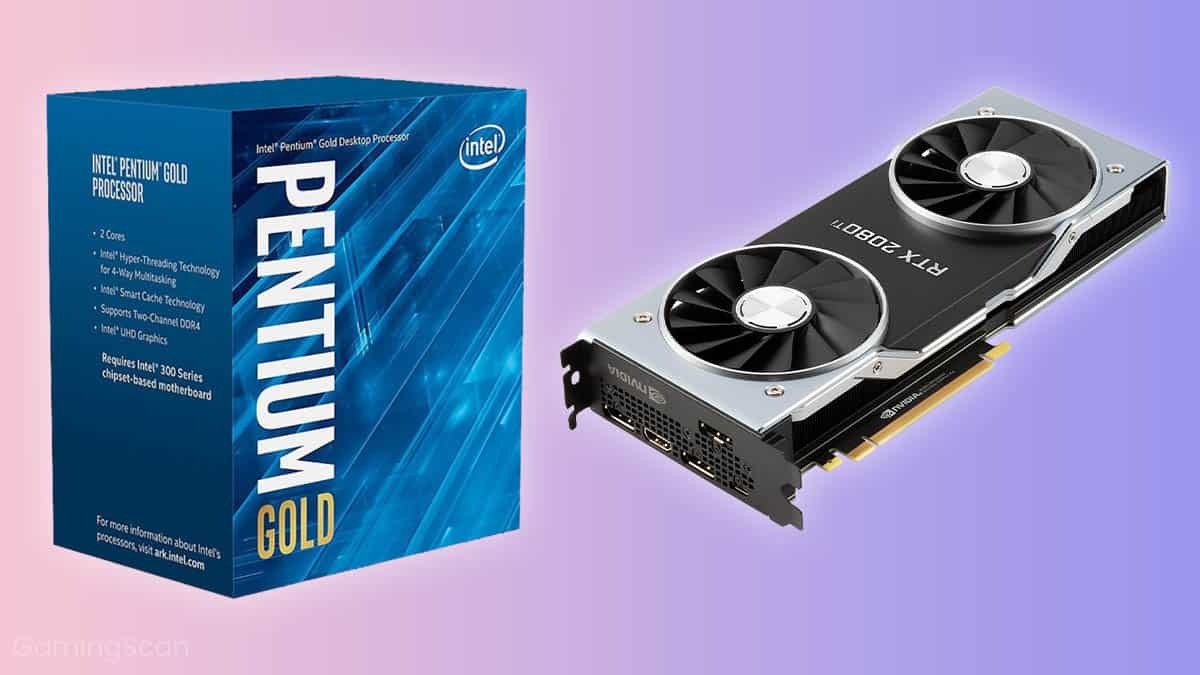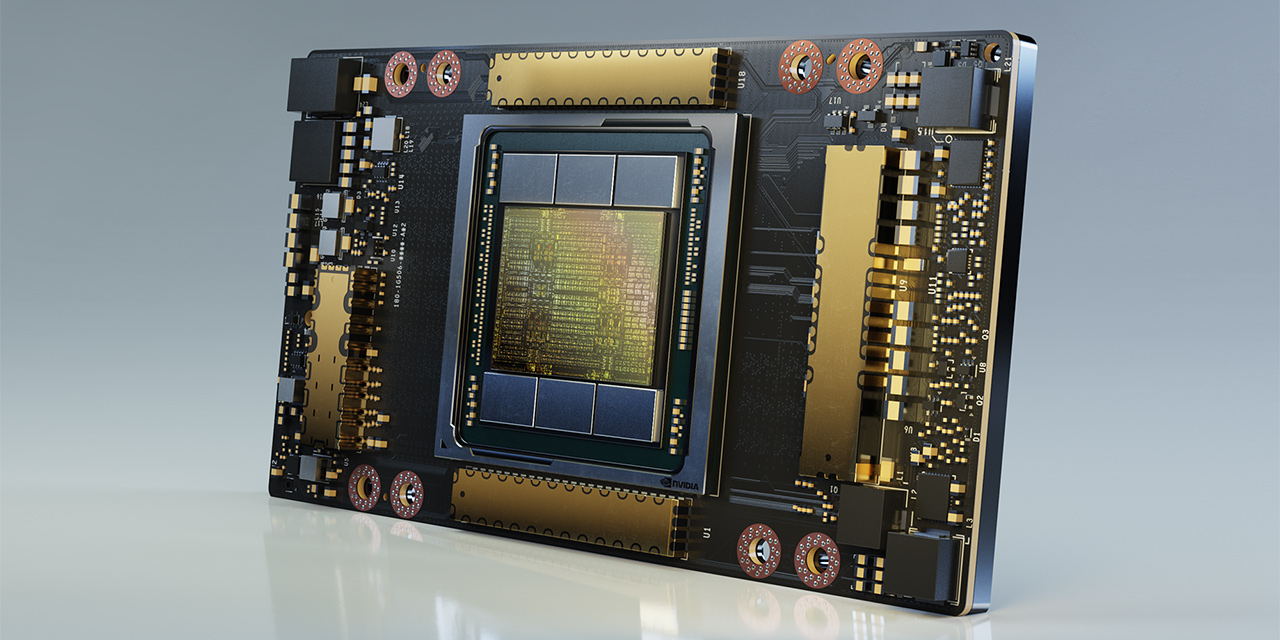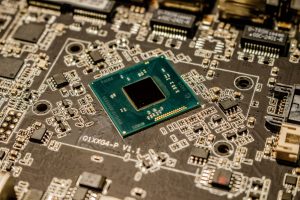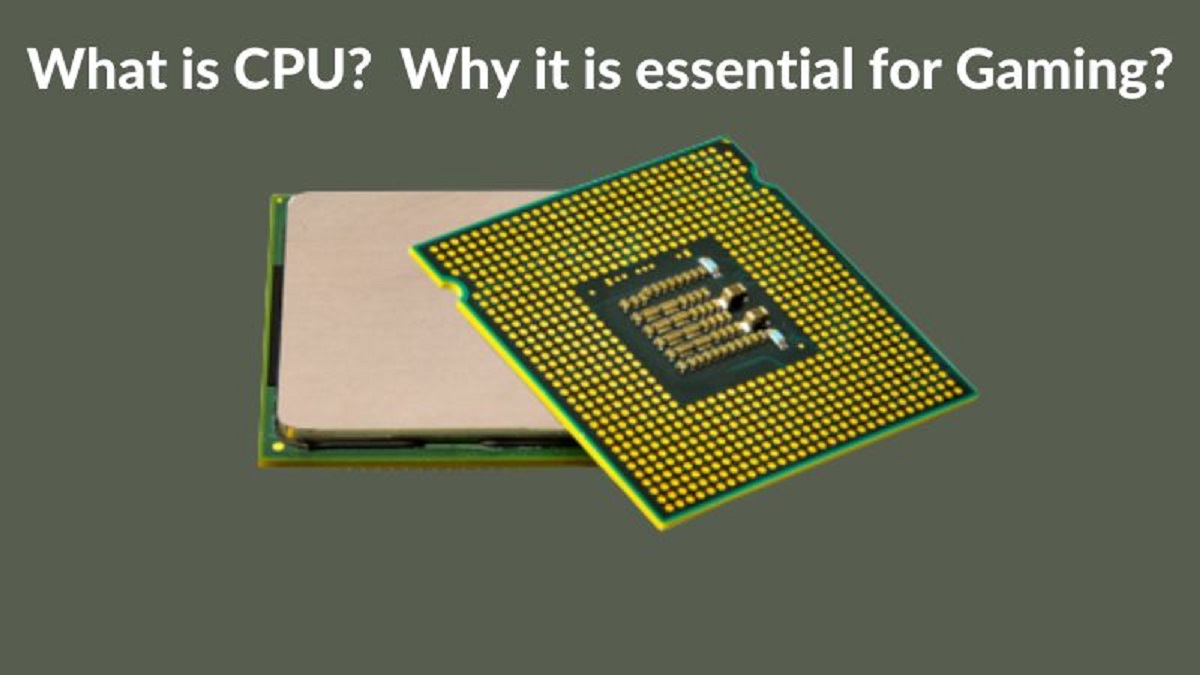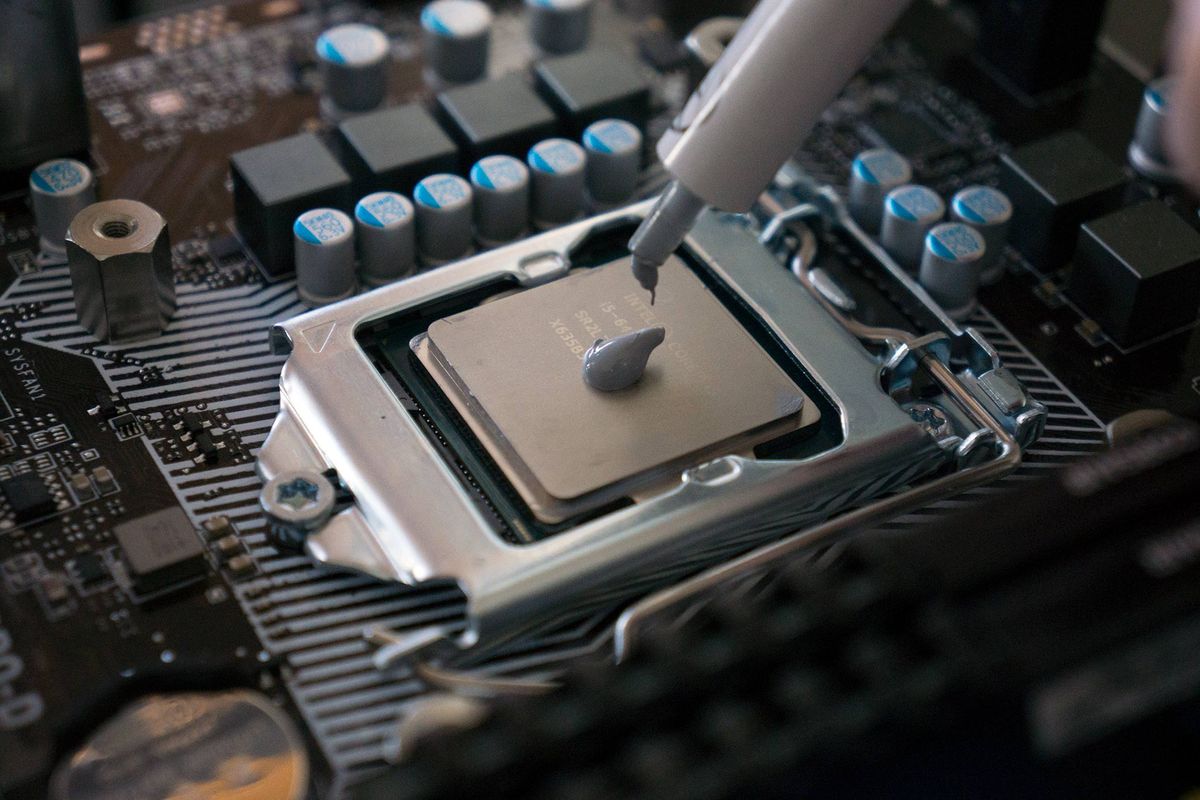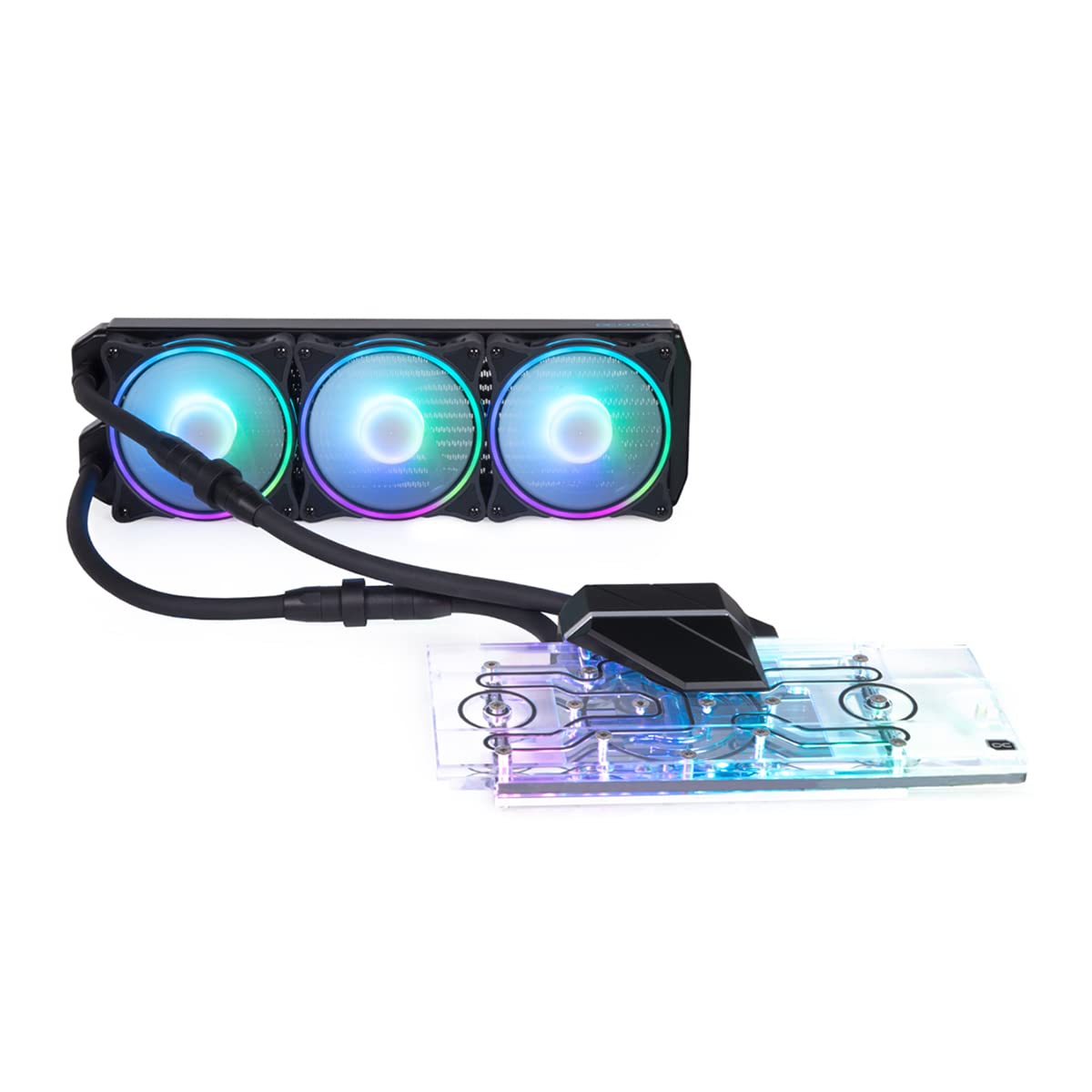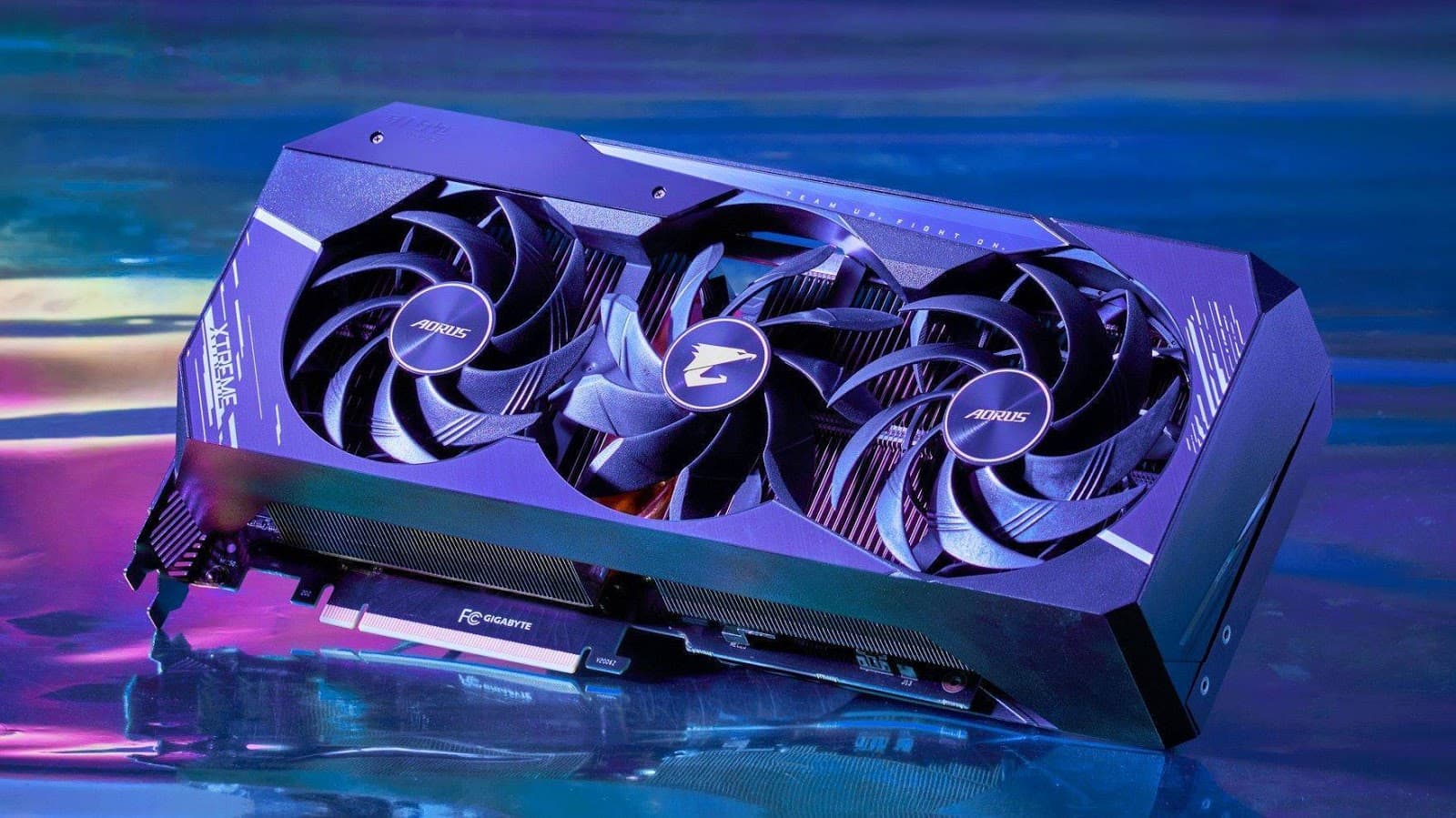Introduction
In the world of technology, two crucial components play a vital role in the performance of computers and other electronic devices: the CPU (Central Processing Unit) and the GPU (Graphics Processing Unit). These components are often mentioned when discussing the power and capabilities of a device, whether it be a personal computer, a gaming console, or a mobile phone. Understanding the functions and characteristics of CPUs and GPUs is essential for anyone interested in technology or seeking to optimize their device’s performance.
The CPU serves as the brain of a computer or device, responsible for executing instructions, performing calculations, and controlling the overall operations of the system. On the other hand, the GPU is primarily designed to handle and accelerate graphical computations, making it particularly advantageous for tasks that involve heavy visual rendering, such as gaming, multimedia applications, and 3D modeling.
In this article, we will delve into the components, characteristics, and functions of both the CPU and GPU. We will also explore the differences and similarities between these two powerful processing units. By the end of this article, you will have a clearer understanding of their significance and the role they play in powering the devices we use on a daily basis.
What is a CPU?
A CPU, or Central Processing Unit, is the primary component of a computer that performs most of the calculations and operations. It acts as the brain of the system, executing instructions and controlling the overall functionality. Think of it as the conductor that directs all the tasks, ensuring that everything runs smoothly.
The CPU is commonly referred to as the “processor” and is typically made up of several interconnected components, each with its specific role.
One of the crucial components of a CPU is the control unit, which manages the fetching, decoding, and executing of instructions. It ensures that the instructions are processed in the correct order and that the correct operations are performed.
Another essential component is the arithmetic logic unit (ALU), responsible for performing mathematical calculations and logical operations. The ALU carries out tasks such as addition, subtraction, multiplication, and division, as well as comparisons and logical operations like AND, OR, and NOT.
The CPU also includes registers, which are small, high-speed memory locations that store data or instructions temporarily. These registers allow for quick access to frequently used data, improving overall performance.
CPU performance can be measured in terms of clock speed, which determines how many instructions the CPU can process per second. A higher clock speed generally results in faster processing. Additionally, CPU performance is influenced by the number of cores it has. A multi-core CPU can simultaneously execute multiple instructions, leading to increased efficiency and faster processing times.
The primary functions of a CPU revolve around executing instructions and managing system resources. It carries out tasks such as running operating systems, executing software programs, handling input/output operations, and managing memory and storage.
Overall, the CPU is the backbone of a computer or electronic device, driving its functionality and determining its processing power. Its components, characteristics, and functions all contribute to the device’s overall performance and capability.
CPU Components
The CPU, or Central Processing Unit, is composed of several essential components that work together to perform calculations and execute instructions. These components are designed to handle different aspects of processing, contributing to the overall functionality and performance of the CPU.
One of the key components of a CPU is the control unit. This unit is responsible for fetching instructions from the memory, decoding them, and coordinating the execution of these instructions. It ensures that instructions are executed in the correct order and that the CPU performs the necessary operations.
The arithmetic logic unit (ALU) is another critical component of the CPU. The ALU carries out mathematical calculations, such as addition, subtraction, multiplication, and division. It also performs logical operations, such as comparisons and bitwise operations. The ALU is designed to handle these operations quickly and efficiently, contributing to the overall performance of the CPU.
Registers are small, high-speed memory locations within the CPU that store data temporarily. They are used to hold instructions, intermediate values, and addresses during the execution of programs. Registers allow for fast access to frequently used data, reducing the need to access main memory and improving overall processing speed.
The control bus, address bus, and data bus are also important components of the CPU. These buses facilitate communication between the various components of the CPU and the rest of the computer system. The control bus carries control signals that regulate the flow of data and instructions, while the address bus is used to specify the location in memory for data or instructions. The data bus, on the other hand, is responsible for transferring data between the CPU and memory or other peripheral devices.
Finally, the cache memory plays a vital role in CPU performance. It serves as a high-speed, temporary storage for frequently accessed data or instructions. The cache memory allows the CPU to quickly retrieve this data, reducing the time it takes to access the main memory. This results in faster processing and improved overall performance.
These components work together harmoniously to ensure the proper functioning and efficient operation of the CPU. Each component has a specific role in executing instructions, performing calculations, and managing system resources.
CPU Characteristics
The CPU, or Central Processing Unit, is a crucial component of computers and electronic devices, known for its impressive characteristics that influence overall performance. Understanding these characteristics is essential for choosing the right CPU for specific tasks and optimizing system efficiency.
One of the significant characteristics of a CPU is its clock speed. Clock speed refers to the number of cycles the CPU can execute per second, measured in gigahertz (GHz). A higher clock speed indicates faster processing and the ability to execute more instructions in a given time frame.
Another important characteristic is the number of cores a CPU has. A core is like an independent processor within the CPU, capable of executing instructions simultaneously. CPUs can have a single core (single-core), two cores (dual-core), four cores (quad-core), or even more. More cores allow for parallel processing and faster execution of multiple tasks, making the CPU more efficient in handling demanding applications.
The cache size is another characteristic that plays a vital role in CPU performance. Cache memory is a small and ultra-fast memory unit located within the CPU. It stores frequently used data and instructions, allowing for quicker access compared to retrieving them from the primary memory (RAM). A larger cache size generally improves performance by reducing memory latency.
The instruction set architecture (ISA) is another essential characteristic to consider. It refers to the set of instructions that the CPU can understand and execute. Different CPUs may use different ISA, such as x86, ARM, or MIPS. Compatibility with specific software and operating systems depends on the supported instruction set architecture.
Thermal design power (TDP) is a characteristic that indicates the maximum amount of thermal energy a CPU generates under typical usage conditions. CPUs with higher TDP often require better cooling solutions, such as heat sinks or liquid cooling, to prevent overheating and ensure stable operation.
Power efficiency is also an important characteristic to consider, especially for devices with limited power sources like laptops and mobile devices. CPUs with lower power consumption are more energy-efficient, improving battery life and reducing heat dissipation.
Lastly, the socket type and compatibility should be considered when selecting a CPU. The socket type determines how the CPU physically connects to the motherboard. Different processors require specific socket types, so it is important to ensure compatibility between the CPU and the motherboard before making a purchase.
Overall, understanding these characteristics can help individuals make informed decisions when selecting a CPU that best suits their needs, whether it’s for gaming, content creation, or everyday computing tasks.
CPU Functions
The CPU, or Central Processing Unit, performs a wide range of functions that are crucial for the operation of a computer or electronic device. Its primary role is to execute instructions and manage system resources, ensuring that tasks are completed efficiently and accurately.
One of the key functions of the CPU is running an operating system. When a computer starts up, the CPU is responsible for loading the operating system into memory and initializing the necessary processes and services. It coordinates the execution of various tasks and manages the allocation of system resources to different applications and processes.
The CPU is also responsible for executing software programs. It interprets the instructions contained within programs and carries out the necessary calculations and operations. Every action performed on a computer, from opening a web browser to editing a document, involves the CPU executing the instructions required by the respective program.
Handling input and output operations is another important function of the CPU. It receives input from devices such as keyboards, mice, and touchscreens, and processes this data to execute the desired actions. Similarly, it sends output information to devices like monitors, printers, and speakers, converting the processed data into a form that is understandable or perceivable by the user.
The CPU manages memory and storage resources, ensuring that data and instructions are stored and retrieved efficiently. It is responsible for allocating memory for programs, storing data temporarily in registers and cache memory, and facilitating the transfer of data between primary memory (RAM) and secondary storage devices like hard drives or solid-state drives (SSDs).
The CPU also performs calculations and computations. It carries out mathematical operations such as addition, subtraction, multiplication, and division through the arithmetic logic unit (ALU). The ALU is responsible for performing these calculations quickly and accurately, enabling the execution of complex mathematical functions required by various applications.
Furthermore, the CPU manages system interrupts. Interrupts are signals that interrupt the regular flow of execution to handle events such as hardware errors, user inputs, or scheduled tasks. The CPU receives these interrupts, suspends the current task, and responds accordingly to handle the specific event or request.
Overall, the CPU serves as the centralized processing unit that coordinates and executes instructions, manages resources, and ensures the proper functioning of a computer or electronic device. Its wide range of functions makes it an indispensable component for virtually all computing tasks, from running software programs to managing device interactions.
What is a GPU?
A GPU, or Graphics Processing Unit, is a specialized component of a computer or electronic device that is primarily designed to handle and accelerate graphical computations. It plays a crucial role in rendering high-quality graphics, videos, and animations, making it particularly advantageous for tasks that involve heavy visual processing.
While a CPU is a general-purpose processor that handles a wide range of tasks, a GPU is specifically optimized for parallel processing and performing computations required for graphics rendering. It is capable of performing multiple calculations simultaneously, making it highly efficient in handling complex visual data.
Traditionally, GPUs were primarily used in gaming consoles and computers to deliver realistic and immersive graphics in video games. However, with the rise of multimedia applications, visual effects, and complex scientific simulations, GPUs have become increasingly important in various industries, including film production, architecture, virtual reality, and machine learning.
A GPU consists of thousands of smaller processing units called streaming processors or CUDA cores, which work together to perform calculations concurrently. This massively parallel architecture enables the GPU to process and render large amounts of visual data more efficiently than a CPU.
In addition to the streaming processors, the GPU is equipped with its own dedicated memory called video memory or VRAM. This high-speed memory is specifically designed for storing and accessing graphical data. It allows for quick data transfer between the GPU and the display device, resulting in smooth and responsive graphics.
Modern GPUs are also equipped with specialized hardware components called texture mapping units and rasterizers. Texture mapping units handle the mapping of textures onto 3D surfaces, adding realism to graphics, while rasterizers convert 3D objects into 2D pixels, preparing them for display on a screen or monitor.
Furthermore, GPUs often support specialized programming languages, such as CUDA (Compute Unified Device Architecture) by NVIDIA or OpenCL (Open Computing Language), which enable developers to harness the parallel computing power of the GPU for various applications, including scientific simulations, data processing, and artificial intelligence.
In summary, a GPU is a specialized processing unit that excels at performing graphics-intensive computations. Its parallel architecture, dedicated memory, and specialized hardware components make it essential for delivering high-quality visuals and accelerating tasks that involve heavy graphical processing.
GPU Components
A GPU, or Graphics Processing Unit, is composed of several essential components that work together to handle and accelerate graphical computations. These components are designed to efficiently process and render high-quality graphics, videos, and animations.
The core component of a GPU is the streaming processor, also known as the CUDA core or shader core. A GPU consists of thousands of these smaller processing units, which are optimized for parallel processing. Streaming processors work together to perform calculations simultaneously, greatly enhancing the GPU’s computational power for complex graphical tasks.
Memory is another critical component of a GPU. GPUs have their own dedicated memory called video memory or VRAM, which is faster and more efficient for storing and accessing graphical data compared to the system’s main memory (RAM). VRAM allows the GPU to quickly read and write data, improving overall graphics performance and reducing latency.
Texture mapping units (TMUs) are specialized hardware components within the GPU that handle the mapping of textures onto 3D surfaces in real-time rendering. TMUs apply textures to objects, adding visual details and realism to graphics by determining how light interacts with different parts of the scene.
Rasterizers are another vital component of a GPU that converts 3D objects into 2D pixels during the rendering process. Rasterizers determine the shape and size of pixels, their color, and their position on the screen, preparing them for display on a monitor or screen. This process is essential for creating smooth and realistic visuals.
Another necessary component of a GPU is the graphics memory controller, which manages the flow of data between the GPU and VRAM. It ensures efficient data transfer and synchronization between the GPU’s processing units and the memory, optimizing overall graphics performance.
The GPU also includes a render output unit (ROP), which handles the final processing and output of rendered pixels. ROPs perform tasks such as anti-aliasing, blending, and color compression to improve image quality and reduce artifacts during the final stages of rendering.
Modern GPUs also feature a variety of specialized instruction sets and programming interfaces, such as CUDA (Compute Unified Device Architecture) by NVIDIA and OpenCL (Open Computing Language), which enable developers to leverage the GPU’s parallel processing capabilities for various tasks beyond graphics, including scientific simulations, machine learning, and data processing.
These components work together seamlessly to accelerate graphical computations and deliver high-quality visuals. The combination of parallel processing power, dedicated memory, and specialized hardware ensures that GPUs can efficiently handle the demanding requirements of modern graphics-intensive applications.
GPU Characteristics
GPUs, or Graphics Processing Units, possess several distinctive characteristics that contribute to their exceptional performance in handling graphical computations. Understanding these characteristics is key to optimizing the use of GPUs for a variety of applications, including gaming, multimedia production, and scientific simulations.
One significant characteristic of GPUs is their parallel processing capability. Unlike CPUs, which are designed for sequential processing, GPUs excel at performing multiple calculations simultaneously. This parallel architecture allows GPUs to tackle the complex and computationally demanding tasks involved in rendering high-quality graphics, making them highly efficient for graphical computations.
Another crucial characteristic is the number of streaming processors or CUDA cores present in a GPU. These smaller processing units within the GPU work together to process and execute calculations. GPUs can have hundreds or thousands of streaming processors, significantly boosting computing power and enabling faster execution of graphical tasks.
GPU memory, known as VRAM (video random access memory), is another critical characteristic. VRAM is dedicated memory within the GPU that stores and rapidly accesses graphical data. The capacity and speed of VRAM play a crucial role in the GPU’s performance, facilitating quick data retrieval and reducing latency during the rendering process.
One essential consideration is the memory bandwidth of a GPU. Memory bandwidth refers to the rate at which data can be read from or written to the GPU’s VRAM. A higher memory bandwidth allows for faster data transfer, enabling the GPU to move large amounts of graphical data in and out of memory seamlessly.
GPU clock speed is another characteristic to consider. The clock speed determines how fast the GPU’s streaming processors can execute calculations. A higher clock speed results in faster processing and quicker rendering of graphics. GPUs also often support boost mode, which dynamically raises the clock speed during demanding tasks to further enhance performance.
Power consumption is an essential consideration, particularly for devices that rely on limited power sources like laptops or mobile devices. GPUs optimized for power efficiency minimize energy consumption while still delivering high-performance graphics, enabling longer battery life and generating less heat.
Compatibility with APIs (Application Programming Interfaces) and software frameworks is also an important characteristic. GPUs are designed to work seamlessly with specific APIs such as DirectX or OpenGL, enabling software developers to harness the full potential of the GPU for rendering graphics in games, multimedia applications, and other graphical workloads.
Lastly, GPU cooling solutions play a crucial role in maintaining optimal performance. As GPUs generate significant heat during intense computing tasks, efficient cooling mechanisms such as fans, heat sinks, or liquid cooling systems are necessary to prevent overheating and ensure stable operation.
By understanding these characteristics, individuals can select the right GPU for their specific requirements, ensuring optimal performance and efficiency in handling graphical computations.
GPU Functions
GPUs, or Graphics Processing Units, perform a variety of functions that are integral to the production and rendering of high-quality graphics, videos, and animations. These functions are designed to handle complex graphical computations and accelerate the processing of visual data.
One of the primary functions of a GPU is rendering graphics. It takes three-dimensional models, textures, lighting, and camera perspectives as input and generates two-dimensional images or frames that can be displayed on a screen or monitor. The GPU carries out a series of calculations, including geometry processing, texture mapping, and pixel shading, to create realistic and visually appealing graphics.
Another important function of the GPU is accelerating video playback and decoding. Modern GPUs have dedicated hardware capable of rapidly decoding and processing video files, reducing the burden on the CPU. With GPU acceleration, videos can be played back smoothly, even at higher resolutions and frame rates.
GPU functions also extend to image and video editing tasks. Graphics software, such as photo editing and video editing applications, often utilize the computational power of the GPU to accelerate processes like image filtering, color correction, and video rendering. GPU acceleration enables real-time previews and faster processing of these graphical tasks.
GPUs are also extensively used for complex scientific simulations and computations. Many scientific research areas, such as physics, chemistry, and computational biology, require substantial computational power to process vast amounts of data. GPUs excel in these scenarios, providing parallel processing capabilities that significantly accelerate simulations and computations.
The GPU plays a vital role in gaming, where real-time rendering of graphics is critical for an immersive gaming experience. GPUs enable rendering of complex 3D graphics, adding textures, shading, and lighting effects to create realistic virtual worlds. They also handle tasks like physics simulations and artificial intelligence calculations that contribute to interactive and dynamic gameplay.
Additionally, GPUs are employed in the field of machine learning and artificial intelligence. Deep learning algorithms require massive computational power to train neural networks and process large datasets. GPUs, with their parallel processing capabilities, greatly accelerate these tasks, enabling faster model training and inference.
Furthermore, GPU functions expand beyond graphical tasks. They can be utilized for password cracking, data mining, and cryptographic operations that require heavy computational power. GPUs provide a significant speed boost for these applications compared to using only traditional CPUs.
Overall, the functions of a GPU revolve around accelerating graphical computations and complex tasks, ranging from rendering realistic graphics to accelerating video playback, scientific simulations, gaming, machine learning, and non-graphical computational tasks. GPUs continue to evolve, providing developers and users with powerful tools to handle the increasing demands of visual processing and computation-intensive applications.
CPU vs GPU: Differences and Similarities
The CPU (Central Processing Unit) and GPU (Graphics Processing Unit) are both essential components of a computer system, but they have distinct features and functions. Understanding their differences and similarities can help in determining the appropriate use case for each of these processing units.
One fundamental difference between a CPU and a GPU lies in their design and architecture. CPUs are designed for general-purpose computing and are optimized for handling a wide range of tasks, including running operating systems, executing software programs, and managing system resources. On the other hand, GPUs are specialized for parallel processing and excel at performing highly complex graphical computations, making them ideal for tasks involving real-time rendering, video playback, and 3D graphics.
The number and structure of cores are another contrasting feature. CPUs typically have a relatively small number of cores, ranging from a few cores in entry-level models to multiple cores in high-end processors. Each CPU core is designed for executing complex instructions and tasks sequentially. In contrast, GPUs have a significantly higher number of cores, often numbering in the thousands. These cores are optimized for parallel processing, which allows for simultaneous execution of multiple instructions, leading to efficient handling of graphical computations.
Another distinction lies in the memory architecture. CPUs typically have a smaller amount of high-speed cache memory closer to the core, which enables faster access to frequently used instructions and data. In contrast, GPUs have larger amounts of dedicated video memory or VRAM, which is crucial for storing and processing large amounts of graphical data efficiently.
Memory bandwidth is another point of differentiation. CPUs typically have lower memory bandwidth compared to GPUs since they are not primarily designed to handle large-scale parallel computations. GPUs, on the other hand, often have higher memory bandwidth rates to facilitate the rapid exchange of data between the GPU cores and the VRAM, enhancing graphical performance.
Despite these differences, CPUs and GPUs also share some similarities. Both CPUs and GPUs are processors that perform calculations and are essential for the overall functioning of a computer system. They both utilize cache memory to improve performance by storing frequently accessed instructions or data. Additionally, both CPUs and GPUs rely on programming languages and APIs to interface with software and applications.
Furthermore, CPUs and GPUs can complement each other in certain scenarios. Some applications require both CPU and GPU processing power, with the CPU handling general computing tasks and the GPU accelerating graphics-intensive computations. This synergy is particularly evident in areas such as gaming, scientific simulations, and machine learning, where a combination of CPU and GPU processing can deliver optimal performance.
In summary, the CPU and GPU have distinct architectures and functions. CPUs are versatile and handle general-purpose computing tasks, while GPUs excel at parallel processing and accelerating graphical computations. Understanding their differences and similarities is crucial for selecting the appropriate processing unit for specific applications and optimizing overall system performance.
Conclusion
In the world of technology, the CPU and GPU play vital roles in powering and enhancing the performance of computers and electronic devices. Understanding the functions, characteristics, and differences between these two processing units is crucial for optimizing system efficiency and choosing the right components for specific tasks.
The CPU, as the central processing unit, serves as the brain of a computer or device. It executes instructions, manages system resources, and performs a wide range of tasks essential for the overall functionality of the system. The CPU’s design, clock speed, and number of cores affect its computing power and ability to handle various applications.
The GPU, on the other hand, is a specialized processing unit designed for parallel processing and graphical computations. With its high number of cores and dedicated video memory, the GPU excels at rendering high-quality graphics, video playback, and accelerating complex visual computations. It is particularly advantageous in gaming, multimedia production, and scientific simulations.
While the CPU and GPU have distinct functions and architectures, they also share similarities. Both components are critical for overall system performance and rely on cache memory for quicker data access. Additionally, they utilize programming languages and interfaces to interact with software and applications.
Understanding the differences and similarities between CPUs and GPUs allows us to harness their respective strengths and optimize the utilization of resources. In many cases, a combination of both CPU and GPU processing power can deliver optimal performance, especially in areas such as gaming, scientific simulations, and machine learning.
Whether you are choosing a CPU for general computing tasks or harnessing the parallel processing power of a GPU for graphical computations, having an understanding of these components empowers you to make informed decisions to meet your specific needs.
In the ever-evolving landscape of technology, CPUs and GPUs continue to advance, offering increased computing power, improved graphics performance, and enhanced efficiency. Keeping up with the latest developments and considering the specific requirements of your applications will ensure that you select the right processing units to elevate your computing experience.







